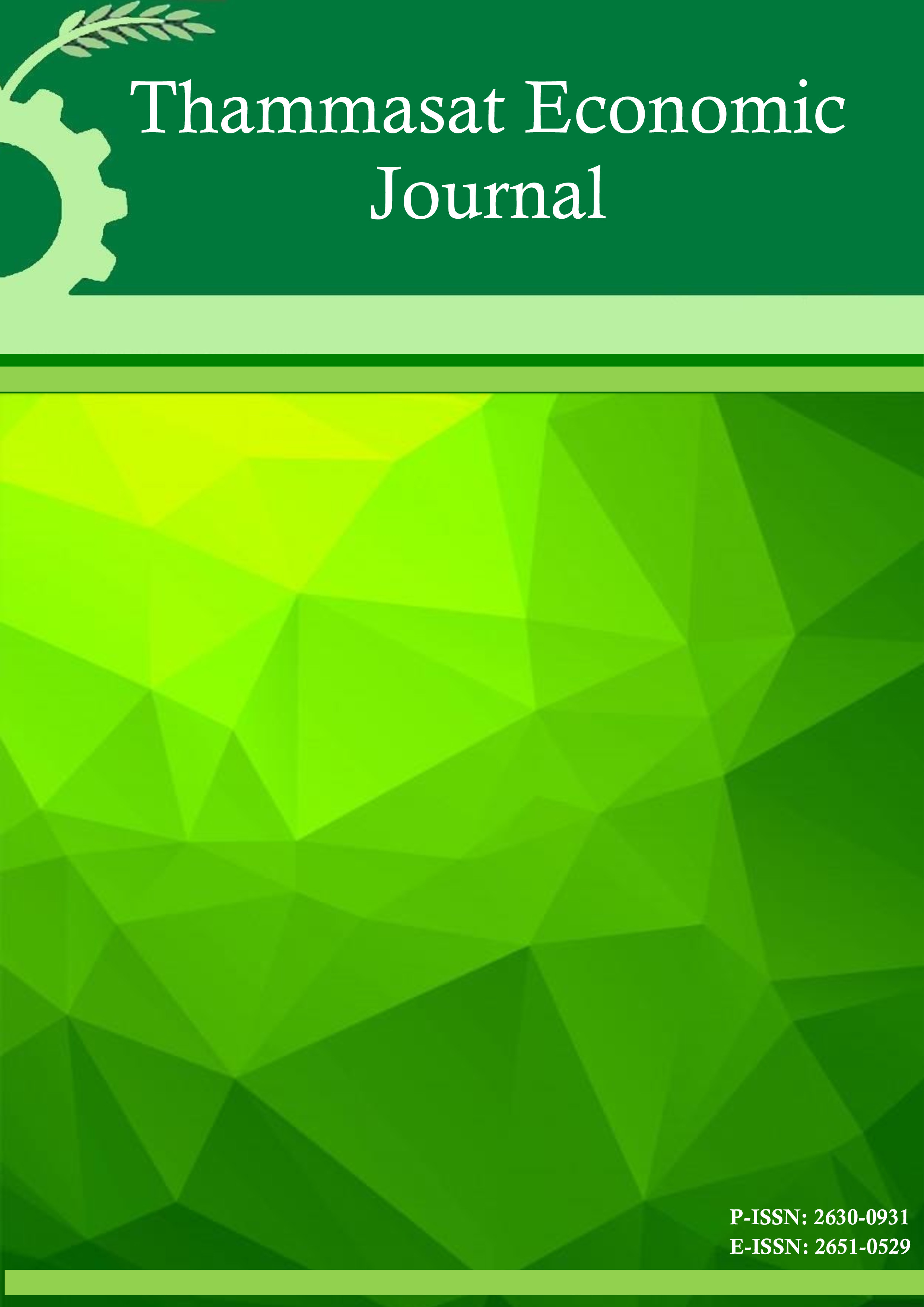Output Convergence among Provinces in Thailand
Abstract
This paper investigates per capita output convergence among provinces in Thailand. We find that in the aggregate level, per capita output of provinces in Thailand diverges. However, there is convergence among groups of rich provinces. We then investigate factors that contribute to convergence. We find that factors that positively affect convergence are average output and diversity of production structure. We find that the output of provinces that close to each other tends to diverge faster than that of provinces that are far apart.
References
2. Barro, R. J. and Sala-i-Martin, X. (1990) “Economic Growth and Convergence across the United States,” NBER working paper 3419.
3. Barro, R. J. and Sala-i-Martin, X. (2003) Economic Growth, MIT Press.
4. Baumol, W.J. (1986). “Productivity Growth, Convergence and Welfare: What Long Run Data Show,” American Economic Review, 76, 1072-85.
5. Basu, S. and Fernald, J.G. (1997). “Returns to Scale in U.S. Production: Estimates and Implications,” Journal of Political Economy, 105(2), 249-83.
6. Ben-David, D. (1993). “Equalizing Exchange: Trade Liberalization and Income Convergence,” Quarterly Journal of Economics, 108, 653-679.
7. Ben-David, D. (1996). “Trade and Convergence among Countries,” Journal of International Economics, 40, 407-443.
8. DeLong, B. (1988). “Productivity Growth, Convergence and Welfare: Comment,” American Economic Review, 78, 1138-54.
9. Gabaix, X. (1999) “Zipf’s Law for Cities: an Explanation,” Quarterly Journal of Economics, 114,739–767.
10. Krugman, P. (1991). “Increasing Returns and Economic Geography,” Journal of Political Economy 99 (3): 483-499.
11. Krugman, P and Venables, A. (1995). "Globalization and the Inequality of Nations," Quarterly Journal of Economics, 110(4), 857-80.
12. Mankiw, G, Romer, D. and Weil, D. (1992). “A Contribution to the Empirics of Economic Growth,” Quarterly Journal of Economics, 107, 407-437.
13. Peechametta, A. (2007). "An Empirical Test of New Economic Geography Theory: the case of Thailand." Thammasat Economic Journal, 25 (3), 102-141, (inThai).
14. Preechametta, A. (2008). "Increasing Returns in Provincial Manufacturing Production." The NRCT Award for Best Research in Economics (2008), Office of National Research Council of Thailand, (in Thai).
15. Quah, D. (1996). “Twin Peaks: Growth and Convergence in Models of Distribution Dynamics,” Economic Journal, 106, 1045-55.
16. Rosssi-Hanberg, E. and Wright (2007). “Urban Structure and Growth,” Review of Economic Studies, 74, 597-624.
17. Slaughter, M. J. (1997). “Per Capita Income Convergence and the Role of International Trade,” American Economic Review, 87, 194-204.
18. Slaughter, M. J. (2001). “Trade Liberalization and Per Capita Income Convergence: A Difference-indifferences Analysis,” Journal of International Economics, 55, 203-228.
19. Solow, Robert M. (1956). “A Contribution to the Theory of Economic Growth” Quarterly Journal of Economics 70: 65–94.










